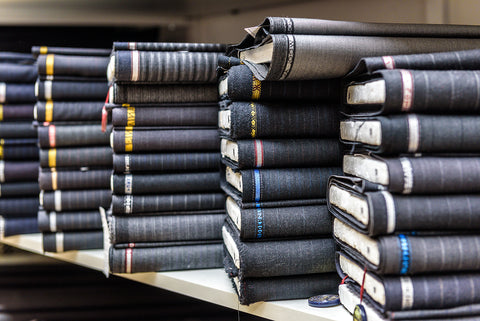Preparing Your Fabric Before Sewing
Posted by Joseph Park on

The fabric is arguably the most important material in any seamstress or tailor’s sewing supply box. Without it, you basically don’t have anything to build the garment or the work piece with.
Before working on any fabric, however, you first need to prepare it for sewing. Properly prepping your fabric is very important so that it will performaccording to your expectations.
Straighten the grain of the fabric
Before anything else, you would be well advised to check the grains of your fabric. The crosswise grain is composed of fabric threads that run parallel to the cut edges of the fabric, while the lengthwise grain, on the other hand, is composed of fabric threads that run parallel to the edge, the self-finished edge of the fabric.
Sometimes, a fabric may have crosswise and lengthwise grains that are not perfectly perpendicular. Such fabrics are said to be “off-grain.” It is important to straighten the grain of the fabric or there’s a big chance that your project could go out of shape.
Correct the fabric grain by spotting a single crosswise thread close to one of the cut edges of the fabric and then using it as a guide to cut a new edge for the fabric. The procedure will be much easier if you can follow a woven design line, like a crosswise stripe, as a reference. Never follow a printed design as a reference because the print might not match the actual grain of the fabric. One technique you can try (if the fabric is loosely woven) is to pull one crosswise thread and remove it completely from the fabric. You can then cut through the gap left behind by the thread.
Serge the cut edges of the fabric
Next, serge the cut edges of your fabric to prevent it from unraveling when you launder it for the fist time and when you begin make your sewing patterns on it.
Pre-wash the fabric
Most fabrics need to be pre-washed because many of them, including cotton, flannel, and knitted fabrics, can shrink significantly when washed. It is important to wash such fabrics first or your project could get ruined when it is washed only after you’ve finished the construction of the garment.
Many fabrics can be washed in the washing machine, although you have to check the care instruction provided by the manufacturer to determine specifics. For instance, some fabrics can be washed under a normal wash cycle, while others need to be washed under gentle wash cycle. Some fabrics can be washed only with cold water, while others can be washed with warm water. Still, there are fabrics that can only be hand washed, and there are also those that you need to take to the drycleaners.
Iron out the fabric
Iron out the fabric after you have done the initial steps of preparation. Make sure to use the appropriate amount of heat on the fabric. This is often indicated on the temperature control dial of your clothes iron. Afterward, you can finally use the fabric, or you can also fold it and put it in storage for later use.
Preparing your fabric may seem like extra work, but it will help you create better garments. How about you? How do you prepare your fabrics for sewing?
Share this post
- Tags: fabrics
